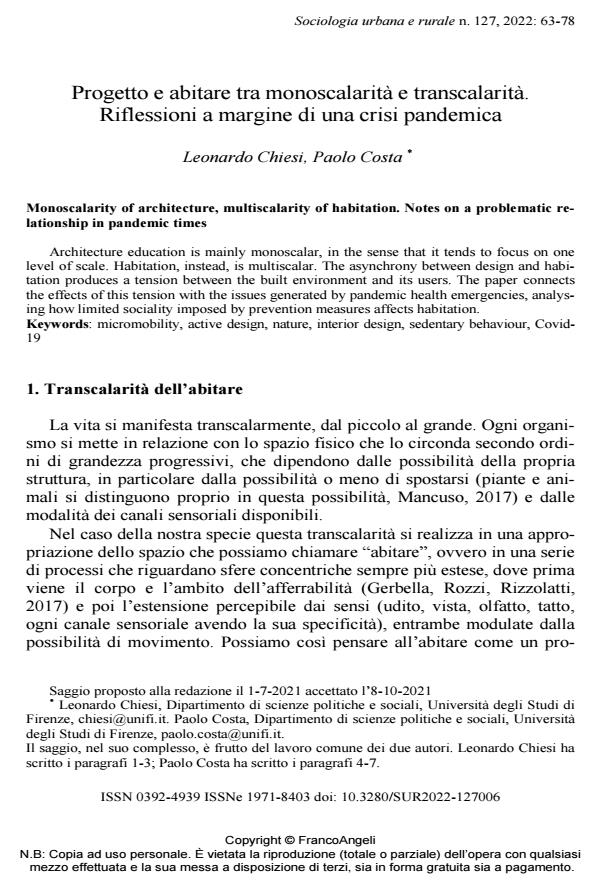Progetto e abitare tra monoscalarità e transcalarità. Riflessioni a margine di una crisi pandemica
Titolo Rivista SOCIOLOGIA URBANA E RURALE
Autori/Curatori Leonardo Chiesi, Paolo Costa
Anno di pubblicazione 2022 Fascicolo 2022/127
Lingua Italiano Numero pagine 16 P. 63-78 Dimensione file 286 KB
DOI 10.3280/SUR2022-127006
Il DOI è il codice a barre della proprietà intellettuale: per saperne di più
clicca qui
Qui sotto puoi vedere in anteprima la prima pagina di questo articolo.
Se questo articolo ti interessa, lo puoi acquistare (e scaricare in formato pdf) seguendo le facili indicazioni per acquistare il download credit. Acquista Download Credits per scaricare questo Articolo in formato PDF

FrancoAngeli è membro della Publishers International Linking Association, Inc (PILA)associazione indipendente e non profit per facilitare (attraverso i servizi tecnologici implementati da CrossRef.org) l’accesso degli studiosi ai contenuti digitali nelle pubblicazioni professionali e scientifiche
La formazione delle Scuole di Architettura è perlopiù mono-scalare, nel senso che tende a concentrarsi su una sola scala progettuale. L’abitare è invece inter-scalare. Questa asincronia tra agire progettuale e abitare genera una tensione tra gli esiti del costruito e i suoi destinatari. Qui si mette ciò in relazione con i problemi generati da emergenze sanitarie di tipo pandemico, valutando come la limitata socialità imposta dalle misure di prevenzione ha effetti su alcuni aspetti dell’abitare.
Parole chiave:micromobilità, active design, natura, interior design, sedentarietà, Covid-19
- Re-naturalizing the built environment. Plants, architecture, and pedagogy in contemporary green schools Leonardo Chiesi, Paolo Costa, Fabio Ciaravella, Bianca Galmarini, in Frontiers in Sustainable Cities 1397159/2024
DOI: 10.3389/frsc.2024.1397159
Leonardo Chiesi, Paolo Costa, Progetto e abitare tra monoscalarità e transcalarità. Riflessioni a margine di una crisi pandemica in "SOCIOLOGIA URBANA E RURALE" 127/2022, pp 63-78, DOI: 10.3280/SUR2022-127006